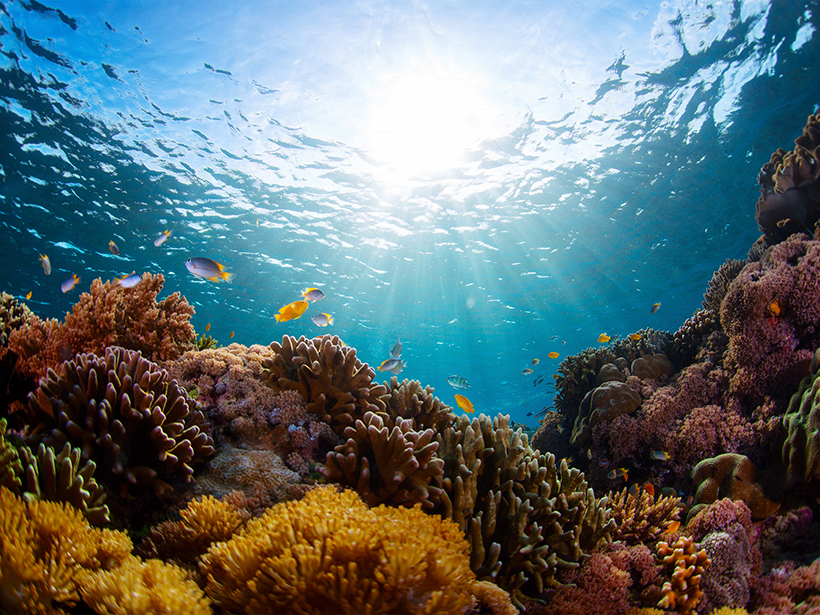Maurice Ewing was blowing things up in the name of science. With a little dynamite, the Lehigh University physics professor spent all the time he could find developing field experiments—specifically, ones using seismic waves to study subsurface geology. In 1934, he was approached by a couple of geologists who urged him to use his techniques to study the seafloor. Eager for any opportunity to probe Earth, Ewing and his explosions pioneered an entirely new way to study the oceans.
Ewing went on to have a distinguished career, including 25 years as director of the Lamont-Doherty Earth Observatory, where he lifted up the entire field of oceanography with his insight into instrument development. Ewing served as AGU’s president in the late 1950s, and since 1976, AGU has awarded a medal in his honor, recognizing significant original contributions to ocean science. This month, as we continue to celebrate our Centennial, Eos is recognizing the ongoing contributions by those who study Earth’s massive, interconnected ocean systems.
Scientists in Australia are building on nearly a century of seafloor mapping progress that began with Maurice Ewing, using modern techniques to create an entirely novel marine habitat map.
Scientists in Australia are building on nearly a century of seafloor mapping progress that began with Ewing, using modern techniques to create an entirely novel marine habitat map. Read how the team at Seamap Australia is using high-resolution bathymetric data to extract information about seafloor geomorphology and using it to visualize which reefs, sea grasses, and other habitats need the most protection. This isn’t just about doing the science, but the heavy lifting of coordinating efforts across a continent to collect the data and develop a scalable, usable tool. That tool is already helping, the team writes, to “inform policies for a well-functioning ocean, one of the two major goals of the United Nations Decade of Ocean Science for Sustainable Development, which supports the 2030 Agenda for Sustainable Development.”
Studying our vast oceans demands innovation. When oceanographers needed a way to study deep-sea currents, they had to stray from techniques such as using satellites and surface floats. In the 1970s, scientists developed a way to track acoustic floats over long ranges, enabling them to make long-term observations under the surface. Today, fleets of these acoustic floats are anchored underwater and ballasted to drift at a certain pressure or density within a region for years before being released to the surface to send their data to a satellite for collection. These float studies have revealed a wealth of information about the complexity of deep-sea currents around the world—that archive of information has been collected into a new database.
Collaboration continues to be a hallmark of U.S. oceanographic research.
Getting these instruments out into remote areas of the ocean is a major challenge to surmount before the science can even start. In our June cover story, a group of oceanographers reports on their recommendations to make everyone’s lives a bit easier when planning research cruises. They offer new protocols for navigating the increasingly complex coordination of large and diverse teams of scientists with governments around the world—on top of the typical challenges of sourcing a vessel, crew, and funding. As the authors write, “Collaboration continues to be a hallmark of U.S. oceanographic research,” and building on those skills to streamline access to research cruises will lay the course for the future of the field.
This month we look closer at the scientists whose creativity (and, in Ewing’s case, explosive innovation) has allowed us to know the oceans much more intimately than a glimpse from the shoreline. Our observations into space so far have shown us just how rare and special our oceans are. Every day, oceanographers look into the deep to show us again.
—Heather Goss (@heathermg), Editor in Chief, Eos
Citation:
Goss, H. (2019), Science in the deep, Eos, 100, https://doi.org/10.1029/2019EO124733. Published on 03 June 2019.
Text © 2019. AGU. CC BY-NC-ND 3.0
Except where otherwise noted, images are subject to copyright. Any reuse without express permission from the copyright owner is prohibited.
Text © 2019. AGU. CC BY-NC-ND 3.0
Except where otherwise noted, images are subject to copyright. Any reuse without express permission from the copyright owner is prohibited.

